March 25, 2022
For the first time this year, the Big Yard hosted 40 species of birds today—it’s looking like a 60-species month.
But if I were to choose one bird to mark the day, I would pick the painted redstart. The warbler, newly arrived from Mexican pine forests as far south as the Mayan highlands, fans and flicks the white feathers of its tail and wings as it pivots among the bud-fat stems of the apple tree searching for emerging caterpillars and bees.
Black and white and red all under. If the migrations of birds mark a change of seasons, the redstart is my watchtower aligned to spring.
Of the 28 appearances of painted redstarts in the yard since the start of the Pandemic (two years!), none has arrived earlier than this week in March. The equinox carries with it an expectation of perky color as the oaks leach their chlorophyll and the junipers cast plumes of smoky pollen. This morning, a fine powder coats my lenses and skin and, as if relieved at the sudden sight of dark water, a redstart plunges into the fountain for a bath and preen. There is no modesty among feather-dusted pilgrims. He returns throughout the day.
The Arizona Breeding Bird Atlas says male painted redstarts arrive ahead of females to establish breeding territories. The females, which look identical to males, will join them in a week or so, find mates and begin nest building. Only she constructs the nest (and incubates the eggs), selecting a site on the ground along a creek bank in a place sheltered by tufts of grass and shrubs or the roots of an overturned tree.
Redstarts nest mostly along the Mogollon Rim, the northernmost extension of their range, but also in the sky islands of southeastern Arizona. According to the Atlas, no breeding record for painted redstarts exists in the Mule Mountains, so come April I will be hiking the shaded reaches of Banning Creek with a sharp eye for a flash of black and white and red.
Thanks for supporting the Big Yard! More to come…like this species profile, yes?



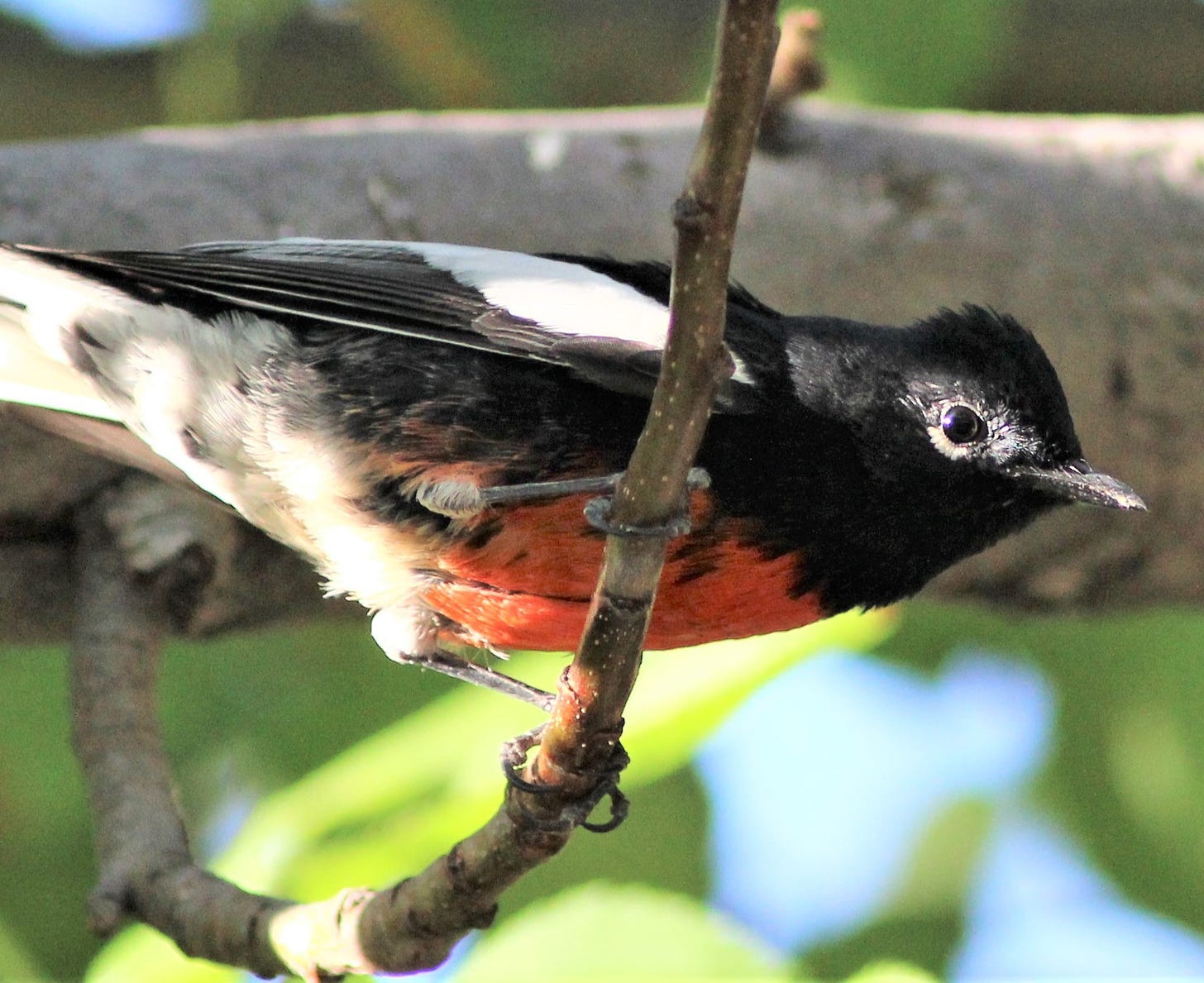
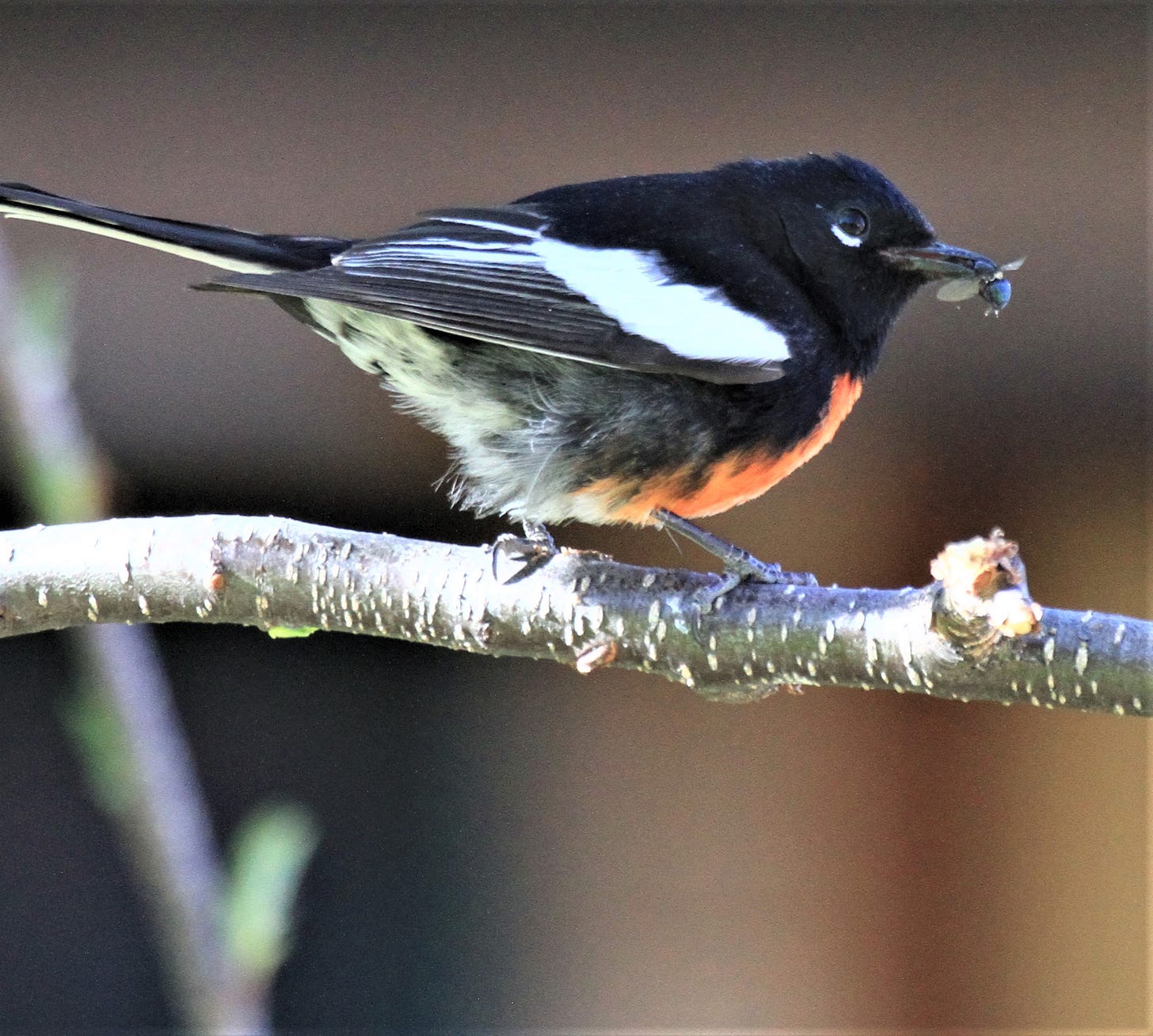
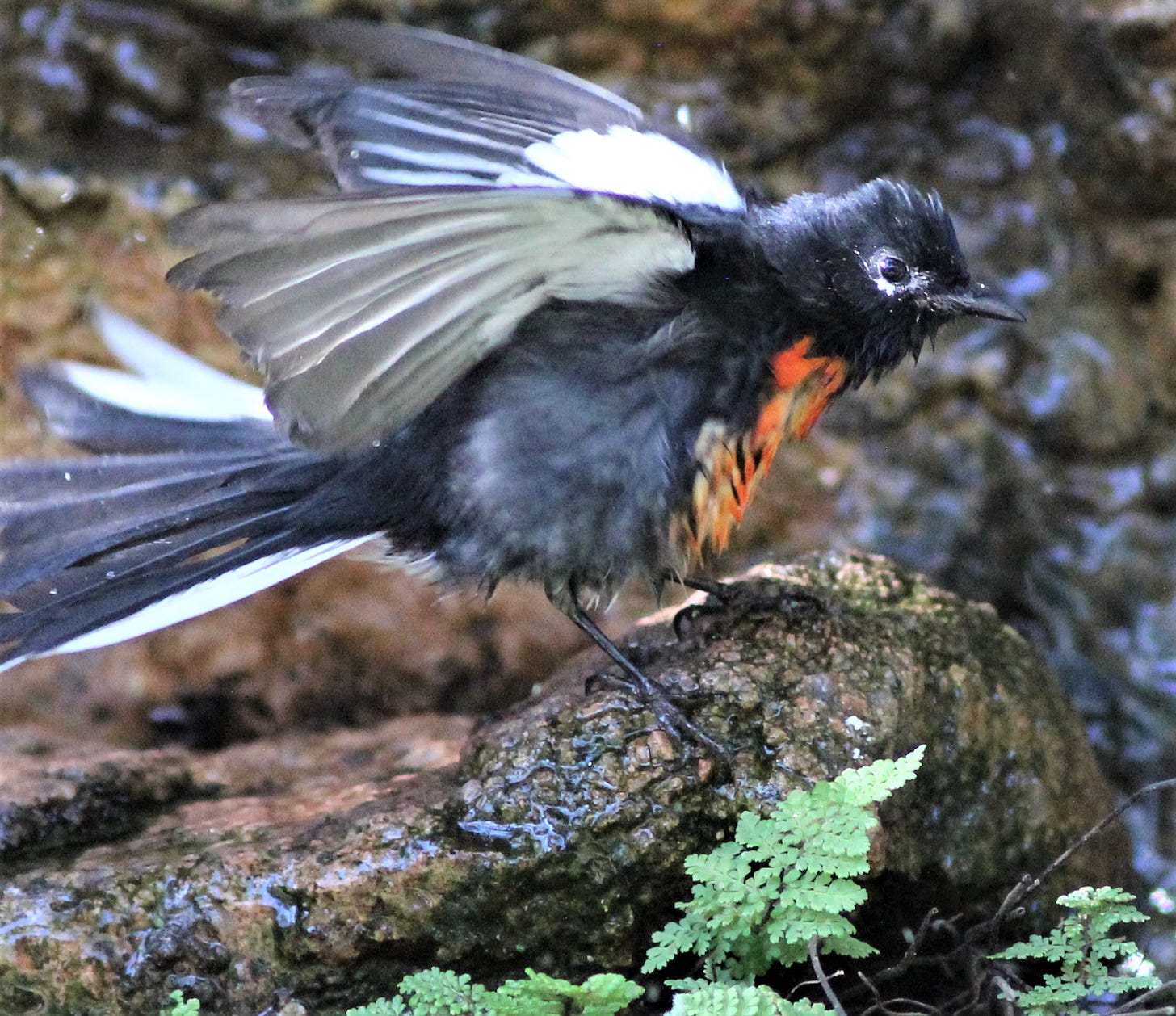
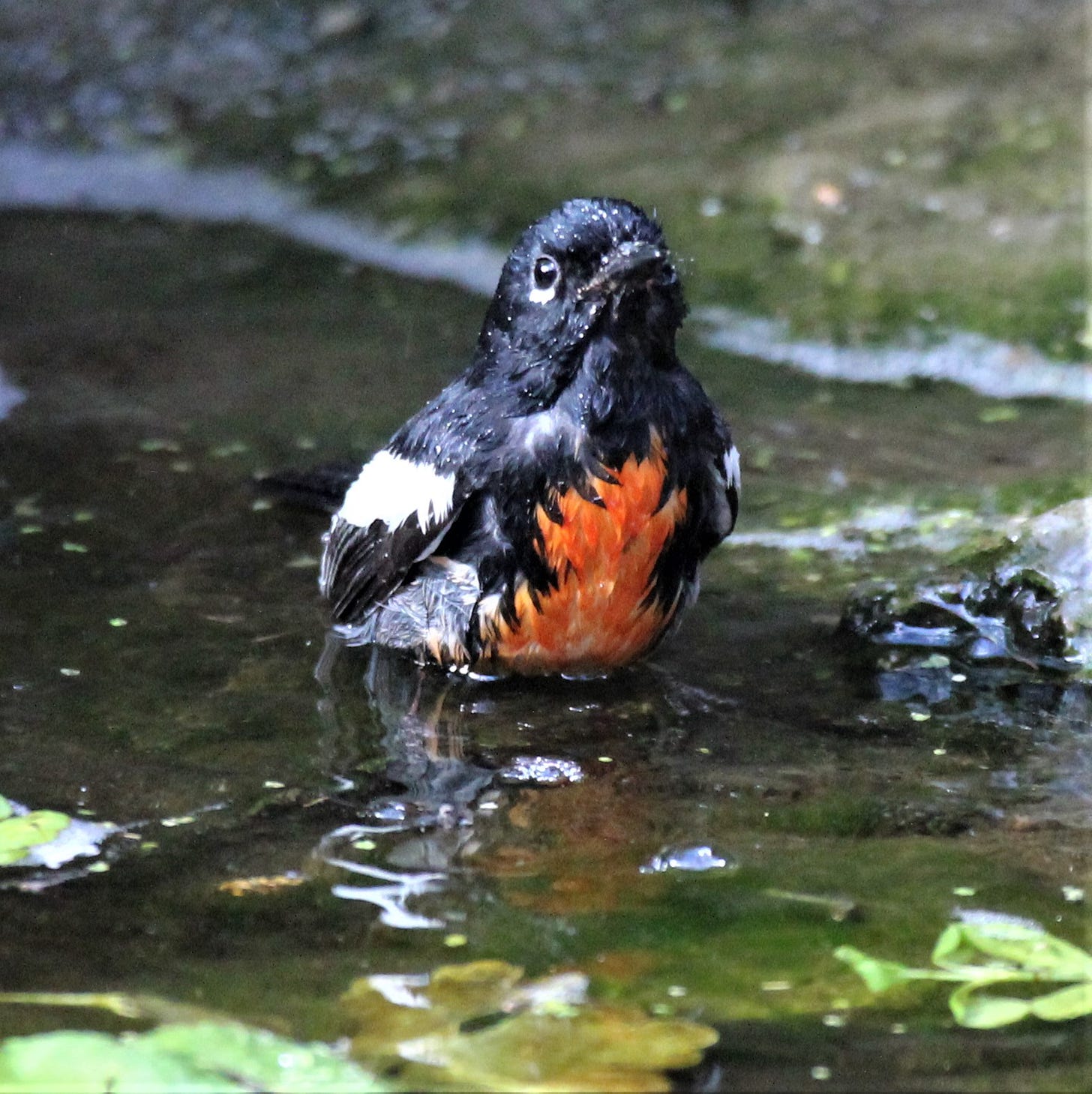
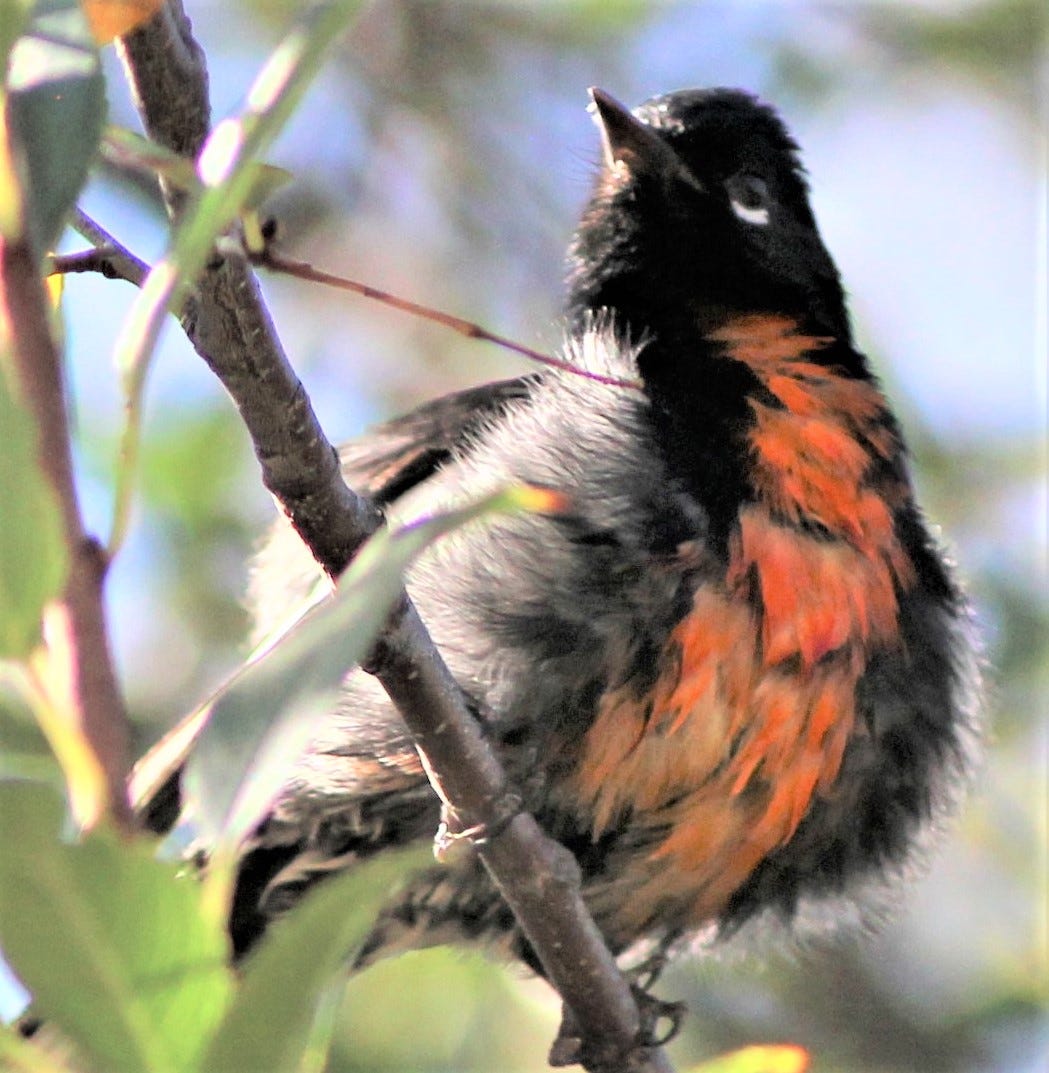
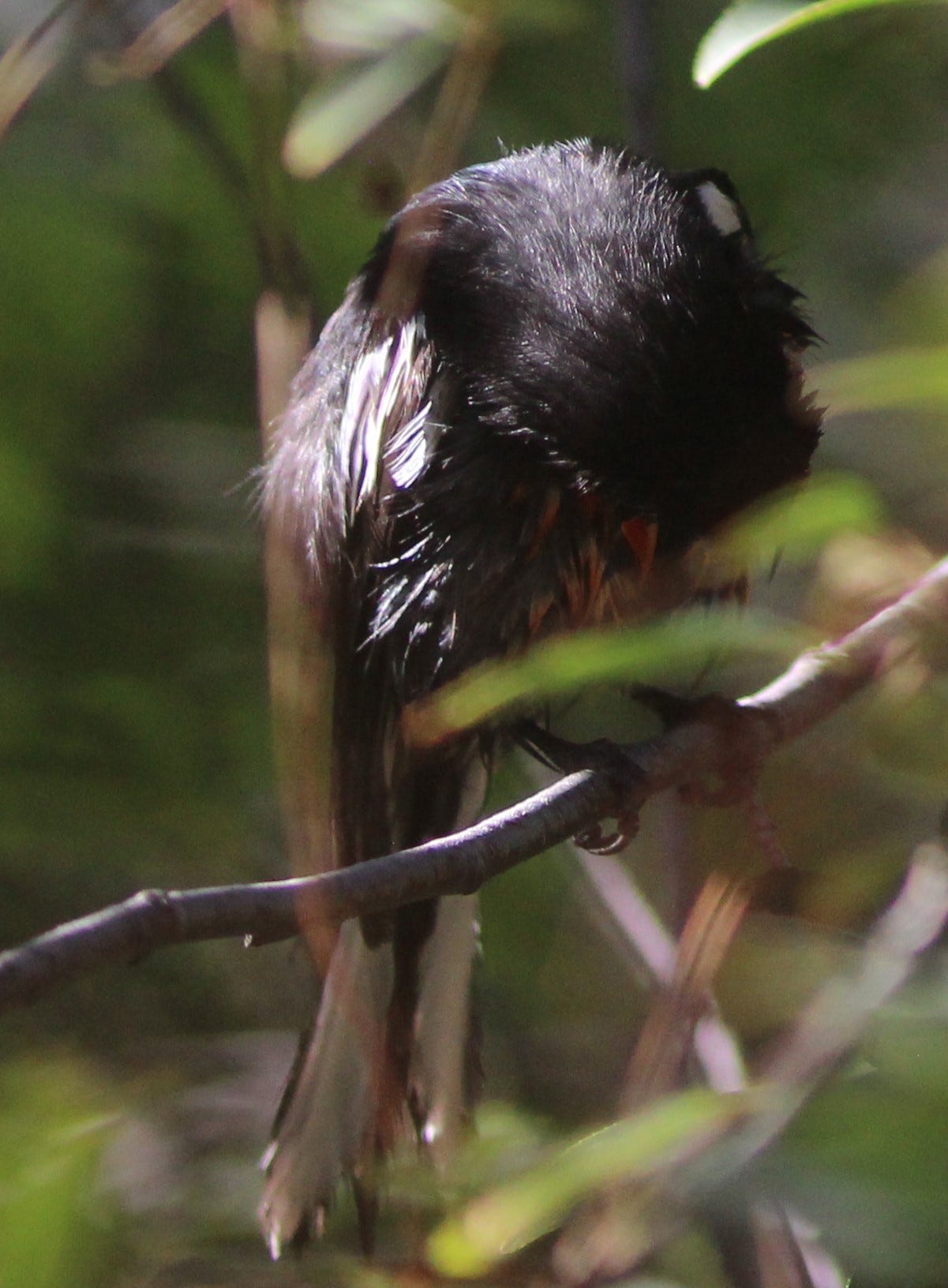
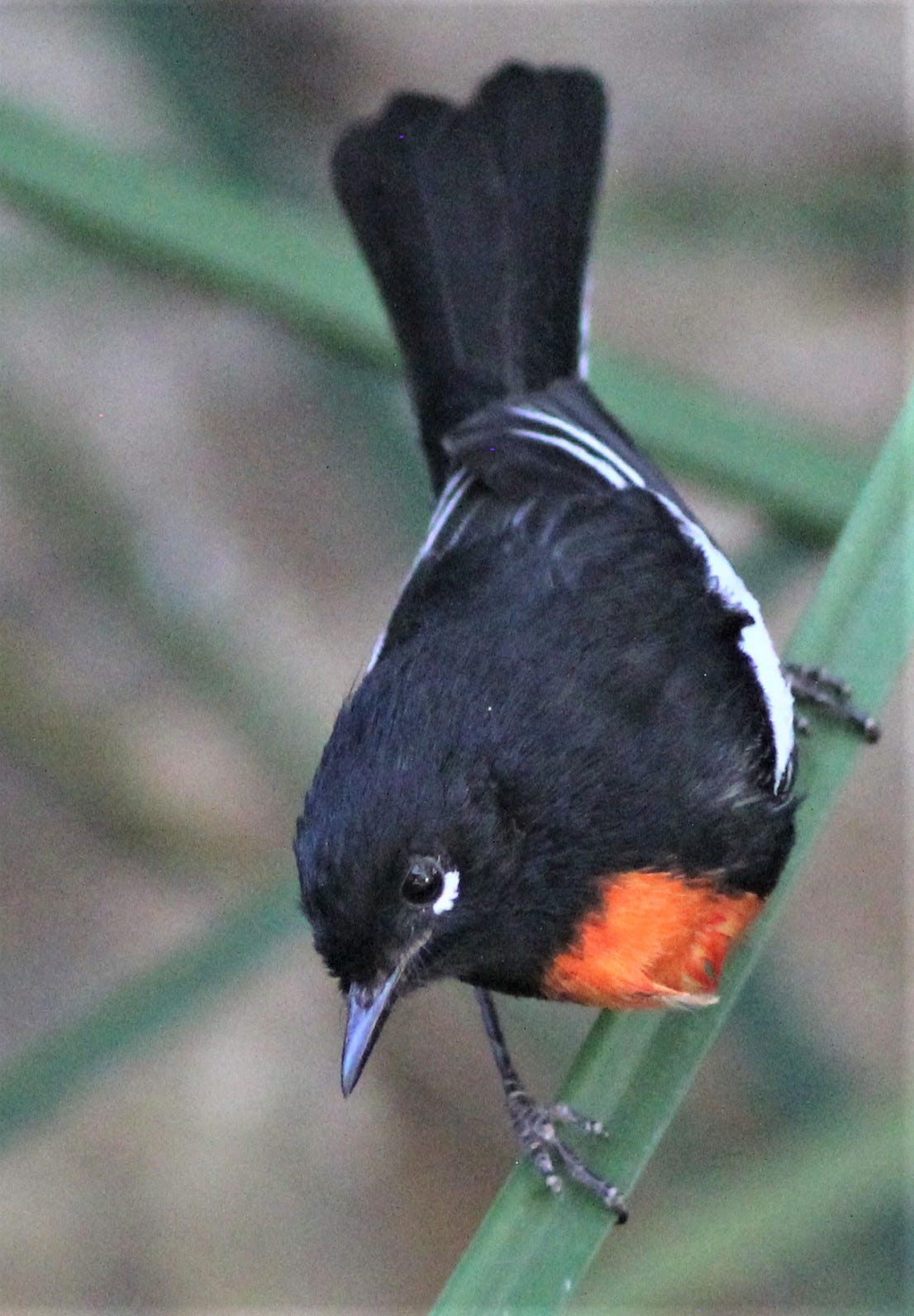
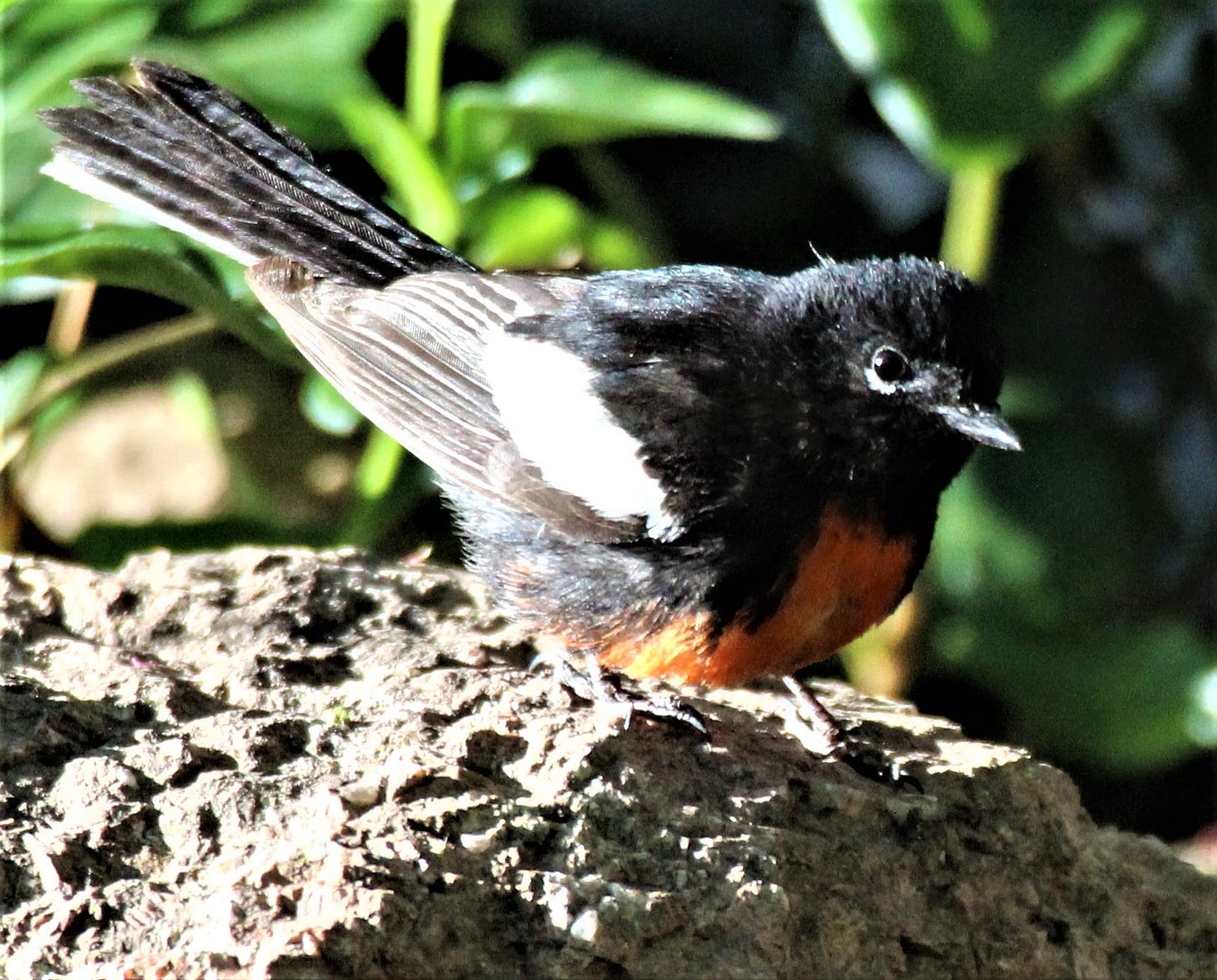
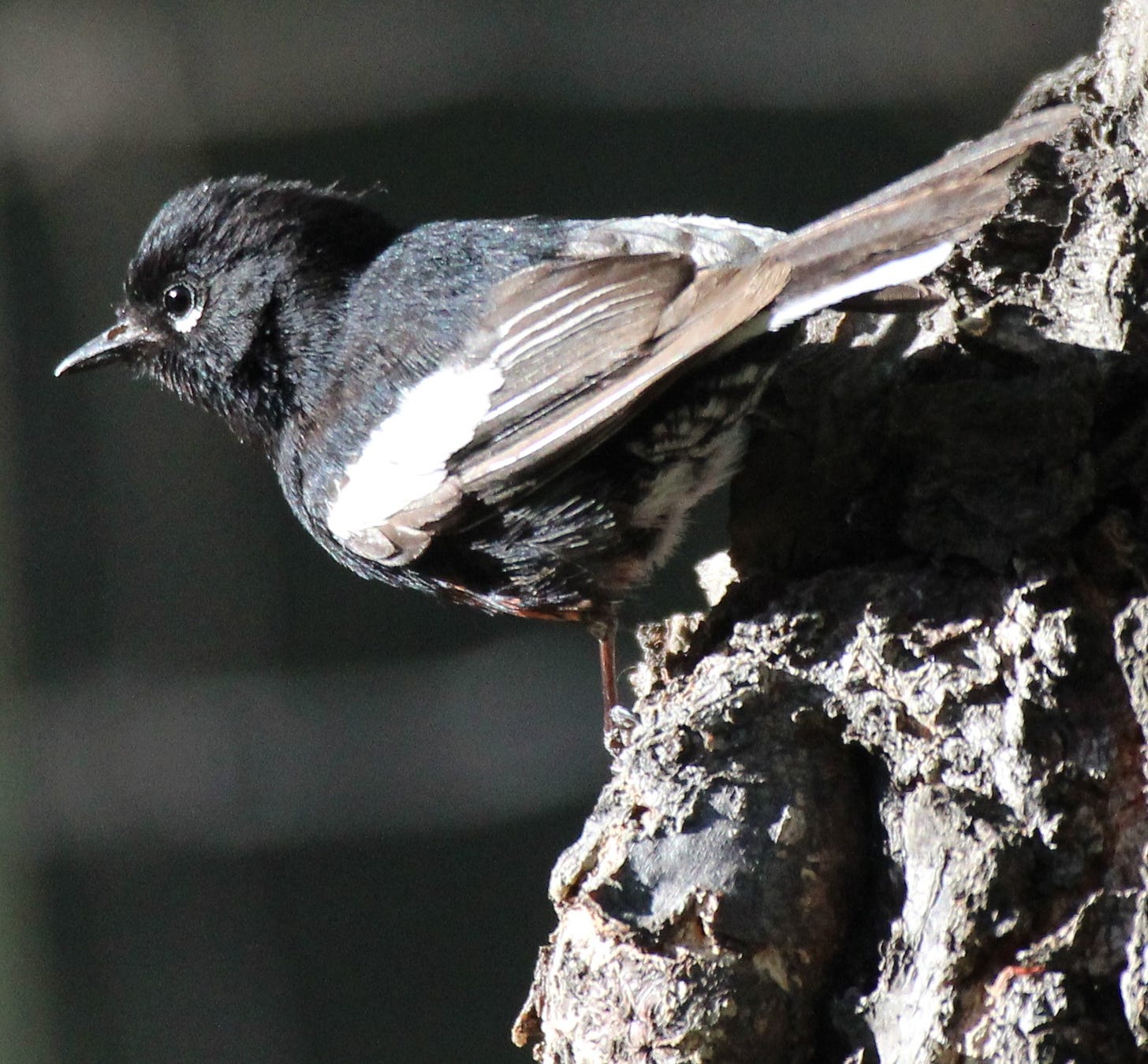
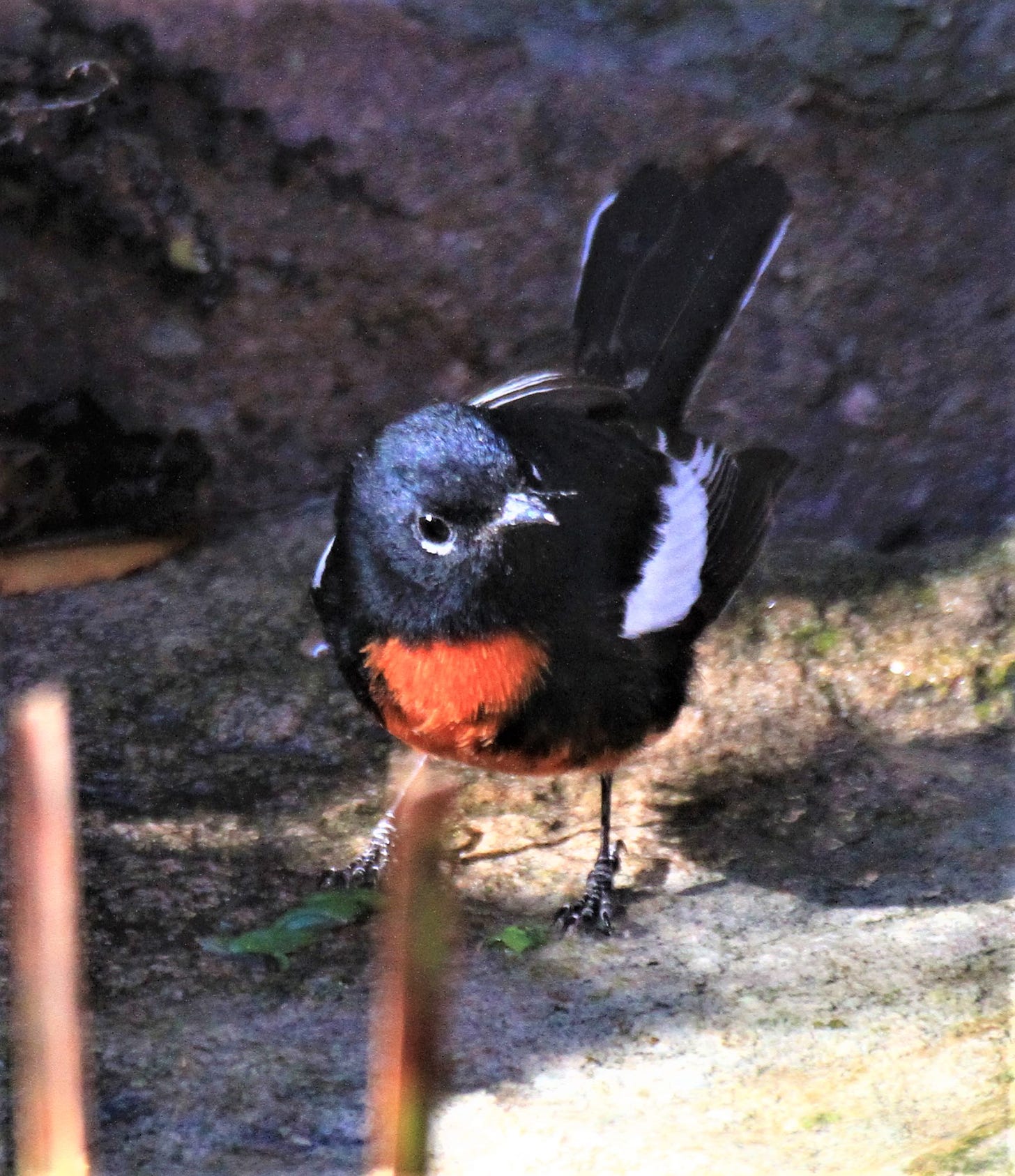
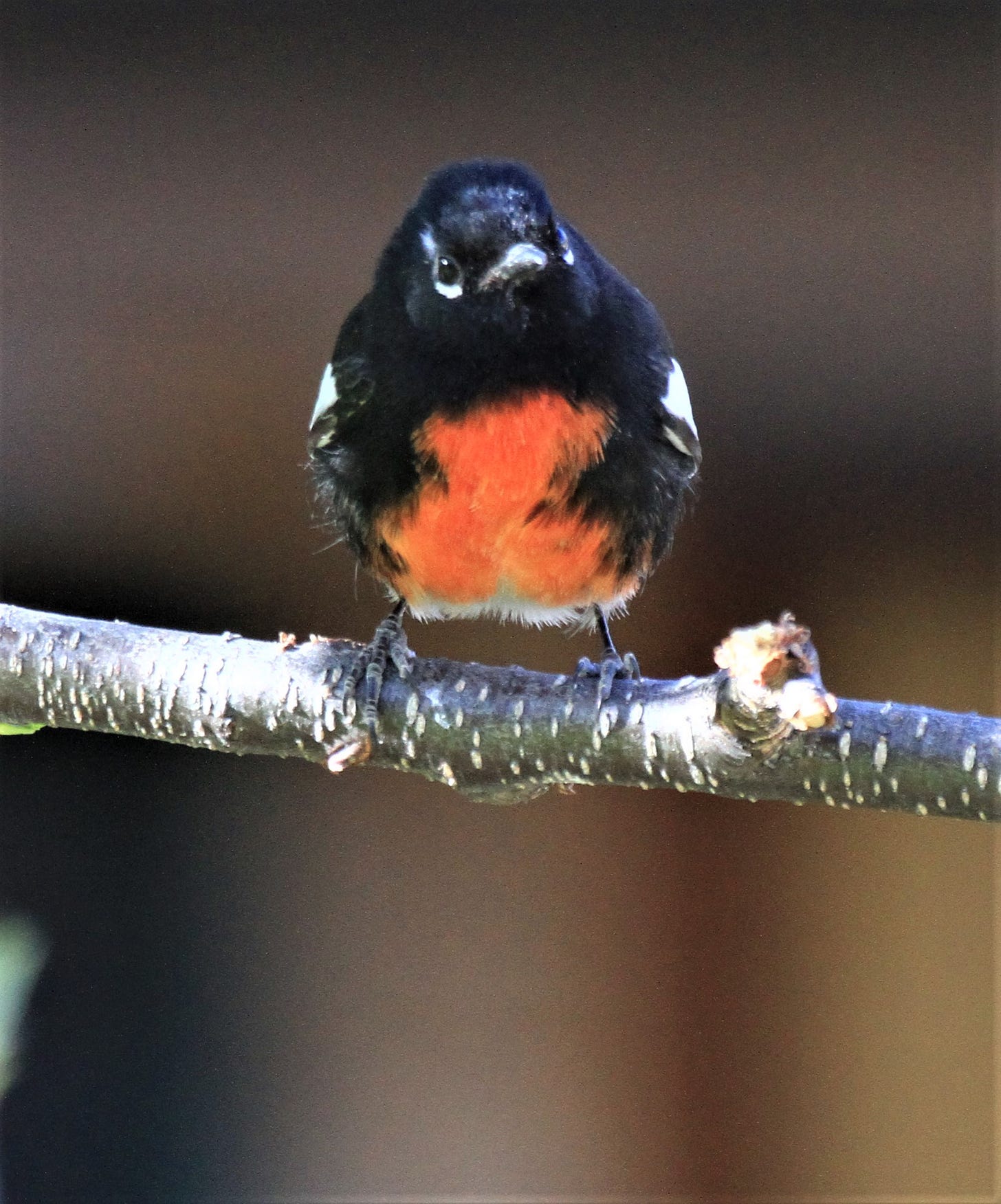
Yes, indeed! What a gorgeous bird!
Yes!